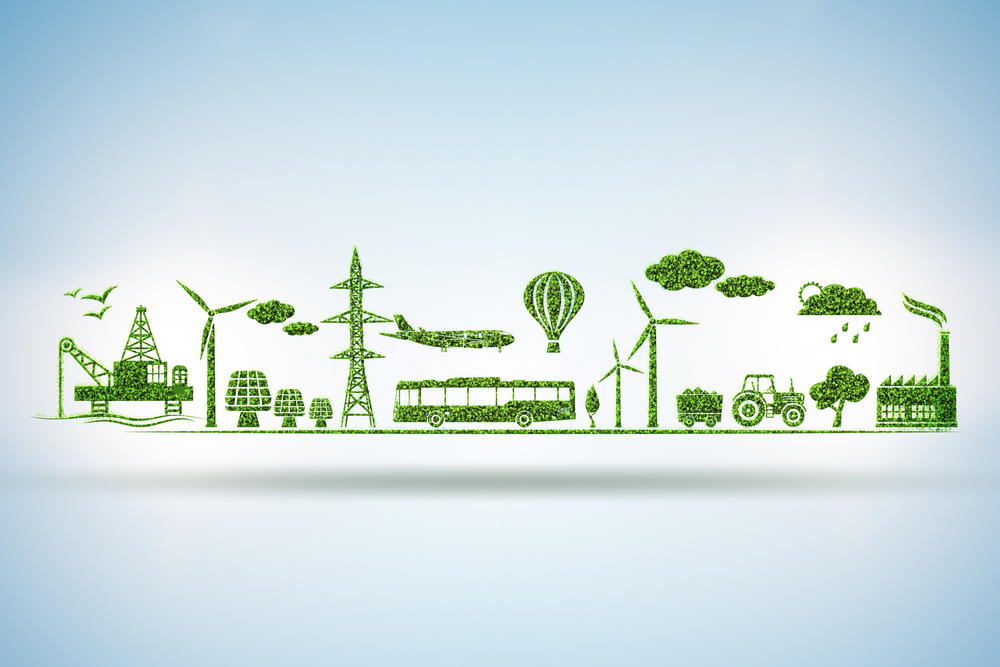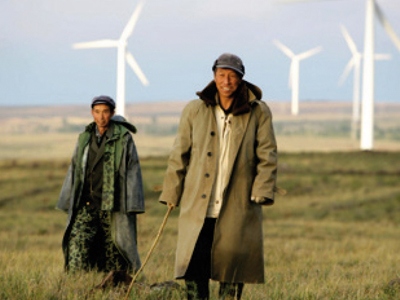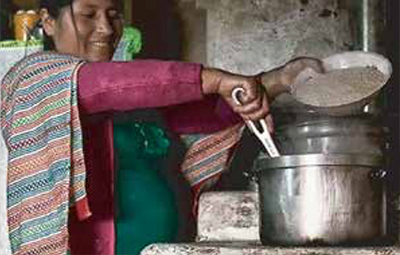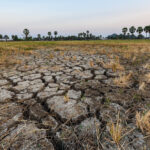
Carbon offsetting is a mechanism that allows organisations and individuals to invest in projects which mitigate climate change to counter their own unavoidable emissions.
Carbon Reduction Institute (CRI) bulk buys these offsets from carefully selected projects which meet both the requirements of the National Offset Standard (NCOS) and CRI’s own stringent requirements.
While we believe that reducing carbon emissions is more important than offsetting them, carbon offsetting is a great way to encourage clean energy projects at the same time.
The project must use a methodology that conservatively quantifies its emissions reductions through a scientifically valid approach.
The project must be audited by an independent third party to quantify the number of tonnes of greenhouse gas that it has saved.
What type of Carbon offset projects (or Methods) are there?
Wind power in China

These projects reduce the emission of greenhouse gases and limits local air pollution, curtailing its negative health impacts, and create job opportunities for local workers, contractors, and suppliers.
It also helps drive China towards meeting its target of 15% clean renewable energy.
- China is the world leader in wind power generation, with the largest installed capacity of any nation and continued rapid growth in new wind facilities.
- China has exceptional wind power resources, with an estimated 2,380 GW of exploitable capacity on land and 200 GW on the sea.
- Wind power accounted for 7.5% of China’s total power generation at the end of 2021
- China is on track to exceed its ambitious 2030 target of 1,200 gigawatts (GW) five years ahead of schedule
China is on track to meet its 33% electricity consumption target from renewables by 2025 and could comfortably exceed it amid ongoing efforts to debottleneck the power grid to accommodate more renewables, analysts and clean energy project developers said.
Cleaner energy for India

Environmental problems in India are growing rapidly. The increasing economic development and a rapidly growing population that has taken the country from 300 million people in 1947 to more than one billion people today is putting a strain on the environment, infrastructure, and the country’s natural resources.
India’s air pollution is exacerbated by its heavy reliance on coal for power generation. Coal supplies more than half
of the country’s energy needs and is used for nearly three-quarters of electricity generation.
Reliance on coal as the major energy source has led to a nine-fold jump in carbon emissions over the past forty years.
The government estimates the cost of environmental degradation has been running at 4.5% of GDP in recent years.
New efficient biomass boilers are installed together with a steam turbine, producing both steam and electricity. The new
boilers are fuelled with locally available agricultural waste instead of traditional, emission intensive coal.
Cookstoves in Developing Nations

Nearly three billion people around the world burn wood, charcoal, animal dung, or coal in open fires or in inefficient stoves and without a chimney for daily cooking and heating.
The Cookstoves in Developing Nations project distributes disseminates cook stoves and water filters to reduce traditional biomass fuel dependency.
This initiative replaces old stoves, cutting greenhouse gas emissions, alleviating pressure on local forests, and improving respiratory health in impoverished communities.
Indoor air pollution accounts for some 20,000 deaths in Uganda every year, with those most at risk being women and children. 23% of children under 5 suffer from acute respiratory infection related disease, one of the leading causes of mortality in the region.
Cookstoves in Developing Nations sources Verified Carbon Standard and Gold Standard carbon credits from the following locations:
- Central and South America
- Africa
- Southeast Asia
- China
In Uganda, the improved cook stove technology has been found to reduce household fuel consumption by an average of 36%; providing greenhouse gas abatement of 1.53t CO2e per year per family. While in Peru the Qori Q’oncha cookstove project has caused a reduction 2.5 tCO2e and 1.9 tons of wood saved per family per year.
Sustainability Initiatives: A Comparative Overview
Environmental Impact:
| Project | Environmental Impact |
|---|---|
| Wind Power in China | Reduces greenhouse gas emissions, limits air pollution |
| Cleaner Energy in India | Reduces air pollution, utilises agricultural waste |
| Cookstoves in Developing Nations | Reduces greenhouse gas emissions, relieves pressure on local forests, and protects biodiversity |
Health Impact:
| Project | Health Impact |
|---|---|
| Wind Power in China | Reduces negative health impacts from air pollution |
| Cleaner Energy in India | Reduces chronic respiratory disease |
| Cookstoves in Developing Nations | Improves livelihoods in poor communities, reduces chronic respiratory disease |
Economic Impact:
| Project | Economic Impact |
|---|---|
| Wind Power in China | Creates job opportunities for local workers |
| Cleaner Energy in India | Creates opportunities for biomass projects, reduced reliance on the local grid |
| Cookstoves in Developing Nations | Provides financial rewards to families, generates employment opportunities |
Carbon offset procurement
Look for organisations that follow internationally recognised standards, such as the Verified Carbon Standard or the Gold Standard. These standards ensure that the projects they support are rigorously assessed and meet stringent criteria for emissions reductions.
Be financially additional
For a carbon offset to be financially additional, the money from the offsets must have been required to make the project happen beyond ‘business as usual’.
Projects often fail this test where they are cheaper than their more polluting equivalent, or their energy savings pay back in timeframes that make it a ‘business as usual’ proposition.
By supporting projects that are additional, you can be confident that your carbon offsets are making a genuine difference in combating climate change.
Transparency
Seek providers who offer detailed information about their carbon offset projects, including methodologies used, project locations, and the social and environmental co-benefits generated.
Transparent reporting allows you to accurately measure the impact of your carbon offset investments.
A Brief History of Carbon Offsets and Carbon Trading
The concept of carbon offsets emerged in the late 1980s, gaining momentum in the 1990s as the Kyoto Protocol was established. This international treaty aimed to combat climate change by setting binding emissions reduction targets for developed countries.
To meet these targets, the idea of carbon trading was born, enabling countries to buy and sell emissions allowances. This approach incentivised emission reductions and provided economic flexibility.
Over the years, carbon offset projects have grown exponentially, ranging from afforestation and reforestation initiatives to renewable energy projects. By investing in these projects, individuals and organisations can compensate for their unavoidable emissions, effectively balancing their carbon ledger.
Become part of the solution for climate change
On your journey to becoming carbon neutral, explore the certification options available to your business under the NoCO2 Certification Program today!


